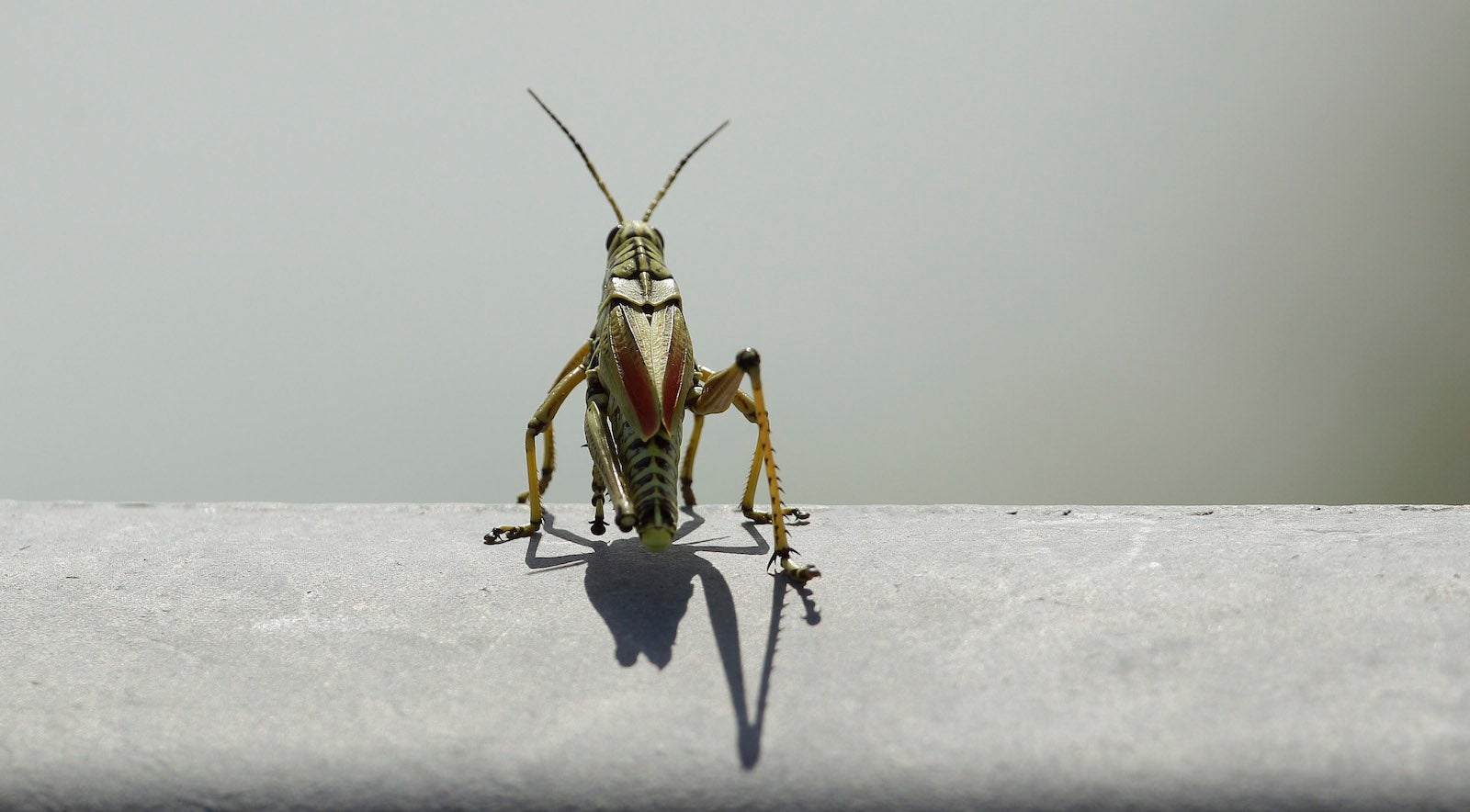This Israeli start-up is breeding grasshoppers to fight famine
In the spring of 2013, terrifying swarms of almost a million locusts descended upon Israel and Egypt, turning the sky black, attacking the green crops and devouring everything in their paths.


In the spring of 2013, terrifying swarms of almost a million locusts descended upon Israel and Egypt, turning the sky black, attacking the green crops and devouring everything in their paths.
One small grasshopper flew further north than most and landed on the doorstep of Israeli entrepreneur Dror Tamir. Two years on, together with two other founders and a team of experts, Tamir has turned the humble insect into a fully fledged start up—Steak TzarTzar—which grows grasshoppers for human consumption. One of the ways that the start up intends to use this food source is to tackle the problem of malnutrition and hunger in parts of the developing world.
The United Nations Food and Agriculture Organization (UNFAO) estimates that approximately 805 million people suffered from chronic undernourishment in 2012-2014—the equivalent of every ninth person on the planet. One of the most prevalent causes of malnutrition is a basic lack of calories and protein, which often leads to stunted growth, higher susceptibility to disease, wasting away and death. But Steak TzarTzar founders say their grasshoppers offer a way to provide more protein to populations at risk.
Stemming from the same family as shrimp, the meaty texture of a grasshopper has “an amazing nutritional content,” Tamir tells Quartz. Grasshoppers contain significant amounts of protein, with only 6-7% fat.
“No cholesterol, no saturated fat, no lactose,” says Tamir. “It’s a real super food.”
Insects have been consumed by humans for millennia and are even mentioned in the Bible, where John the Baptist is described as feasting on “locusts and wild honey” (Mark 1:6).
In fact, a 2013 UN FAO study, entitled “Edible insects: future prospects for food and feed security” (pdf) notes that “insects form part of the traditional diets of at least 2 billion people”, with “more than 1,900 species” reportedly consumed as food.
Insect farming is also more environmentally-friendly than cattle farming because insects produce significantly less greenhouse gasses. The FAO study notes that these same qualities can make insect-based foods an excellent meal option in unstable areas with high food insecurity: “Because of their nutritional composition, accessibility, simple rearing techniques and quick growth rates, insects can offer a cheap and efficient opportunity to counter nutritional insecurity by providing emergency food and by improving livelihoods and the quality of traditional diets among vulnerable people.”
Equally importantly, grasshoppers are not just considered edible, but a delicacy, across Africa and parts of Asia, the Middle East and South America.
“Sometimes, I see children in East Africa eating them out of the bag like sweets,” says Tamir.
The demand for grasshoppers is already high. In Uganda, during the high season, the lowest price for 1kg (2.2 lb) bag of grasshoppers is $8—but one month later when the rainy season begins, typically around May and November, the price soars to $50, says Tamir. This is due to the fact that, ordinarily, the insects are only available for just over one month every year.
This is the problem that Steak TzarTzar decided to tackle. Through a system of greenhouses, they are designing the optimal conditions in which to breed grasshoppers all year round. They are also experimenting with different species of the sprightly insect to determine which will be most nutritious.
In nature, the period from laying the eggs to hatching can take anywhere from four to nine months, or in some cases even several years. But Steak TzarTzar has devised a way to shorten this to just 10 days. The process entails a near round-the-clock supervision at farming facilities in northern Israel, run by Chanan Aviv, a co-founder of the company, who has been researching the way insects can help people lead better and more sustainable lives for years.
“I think it’s the most beautiful creature on earth,” Aviv says of the grasshopper, to Quartz. “It can survive in environments where even humans cannot even dream of surviving. So I thought why not cover the world with insects that people can eat, can make materials from them, can make a living from. And if there are places where people are hungry for protein, why not give them a very good solution—a unique solution.”
For the past two years, not only has Aviv been breeding insects—he himself has also been eating them as his exclusive source of protein. Contrary to the typical Mediterranean diet of vegetables and meat typically enjoyed in Israel, his unconventional diet includes mealworms—a source of Omega-3, protein, vitamins and minerals—and grasshoppers.
“I cook them in a pan with boiled water for 20 minutes. Then I roast them in a pan with a bit of oil and salt and I like it very much!” he tells Quartz.
Several months ago, the company held a taste test with five different grasshopper species, cooked in a variety of different styles.
The traditional east African method involves first plucking the legs and the wings, then frying the grasshopper in a bit of oil and salt. “It looks, tastes and smells like red mullet,” says Tamir.
The Japanese method, says Steak TzarTzar’s founders, involves boiling the creatures in hot water for 20 minutes, then plucking the wings and the legs, and frying the body in soy sauce, sake and sugar, served on rice.
Of course, deep frying the insect and serving it crispy is a universal favorite. The possibilities for recipes are endless, says Tamir. At the end of the meal, the green grasshopper was declared the unanimous winner.
Now the company is working to establish its first commercial-scale centre in Kenya. Its founders are also considering funnelling some of the revenues from selling grasshopper protein powder in the West in order to subsidise the cost of growing grasshoppers in Africa, and plan to run future farming facilities in collaboration with local farmers.